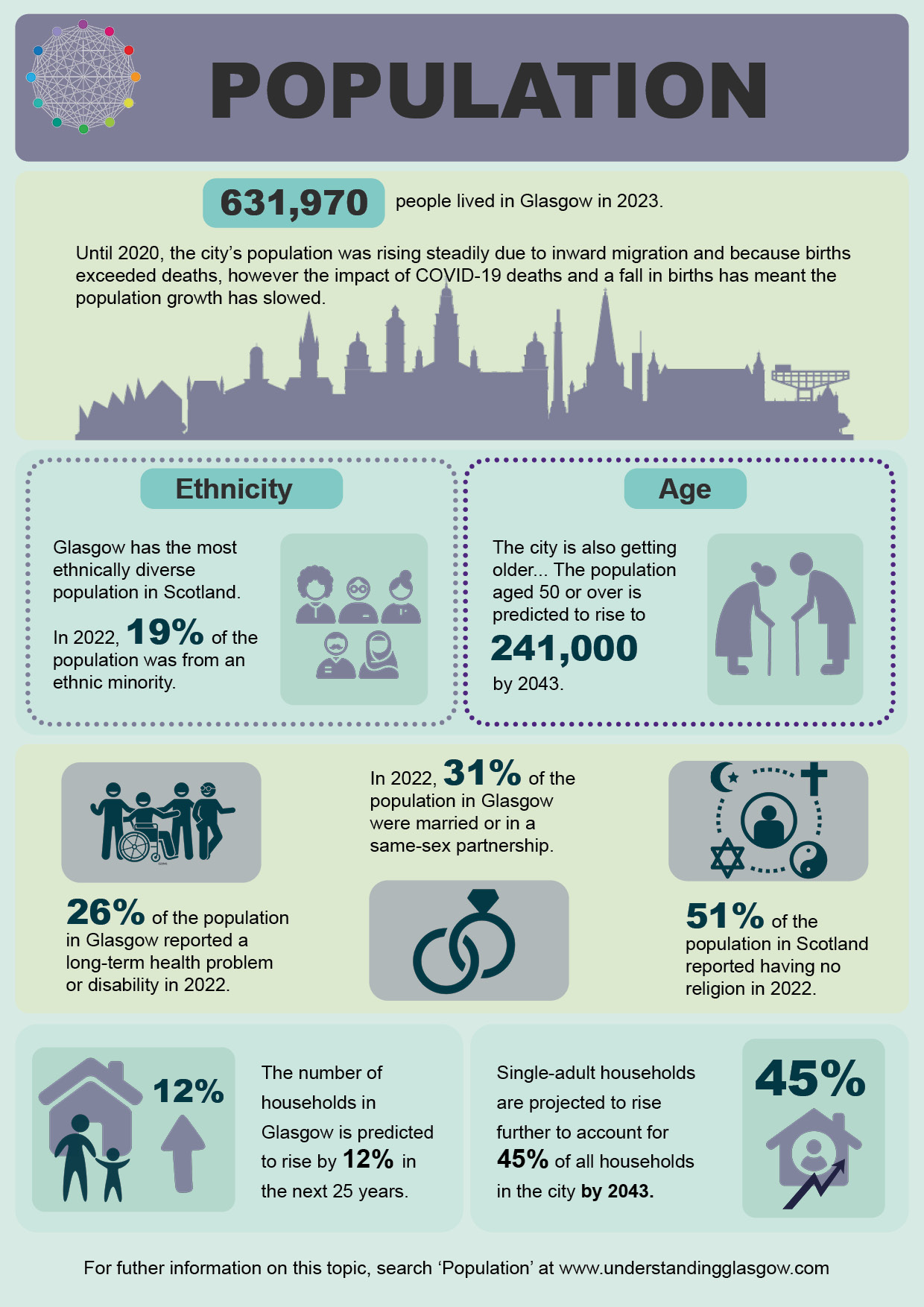Population overview
Understanding the characteristics and structure of a city's population are key to a better understanding of any city. Knowing whether a city is growing or contracting, whether it is attracting new residents and whether its population is ageing are all relevant factors to understanding the changing demographics of a city.
Click here to download the Population infographic.
- Glasgow's population has risen in the last 16 years after decades of decline. In 2023, the city's population stood at 631,970. In contrast, the populations of Inverclyde and West Dunbartonshire have dropped significantly over the last four decades.
- Between 2007 and 2019, the birth rate in Glasgow exceeded the death rate and, along with inward migration to the city, this contributed to a steady rise in the city's population. However, since 2020, the impact of COVID-19 deaths and a fall in births has caused Glasgow's population to reduce slightly.
- Glasgow has the most ethnically diverse population in Scotland. In 2022, 19% of Glasgow’s population were from an ethnic minority.
- Total net migration into Glasgow has increased as the number of migrants arriving in Glasgow has exceeded the number leaving, principally due to an increase in overseas migrants coming to Glasgow.
- Projections suggest that the city's population is set to get older with the population over 50 years of age predicted to rise by 44,000 between 2018 and 2043 to 241,000.
- The number of households in Glasgow is predicted to rise by 12% by 2043. Single-adult households are projected to rise further to account for 45% of all households in the city by 2043.
The children's indicators section of Understanding Glasgow contains more detailed information on aspects of the children's population within Glasgow.
The data on the Understanding Glasgow website comes from a variety of administrative sources and surveys, and the frequency of updates to these sources varies. The graphs and text on each page should indicate the period to which an indicator refers. In some cases, where more recently published data is not available, we still use older published sources, such as the 2011 Census.
Notes
1. For more detailed information on demographic changes at a national and sub-national level go to the National Records of Scotland statistics pages.
2. In September 2017, GCPH published a detailed report on ethnicity and health, The changing ethnic profiles of Glasgow and Scotland. This report explored links between ethnicity and health in a Scottish context and the population health implications of the changing ethnic profiles of Scotland and of Glasgow.
3. This page was last updated in May 2025.

